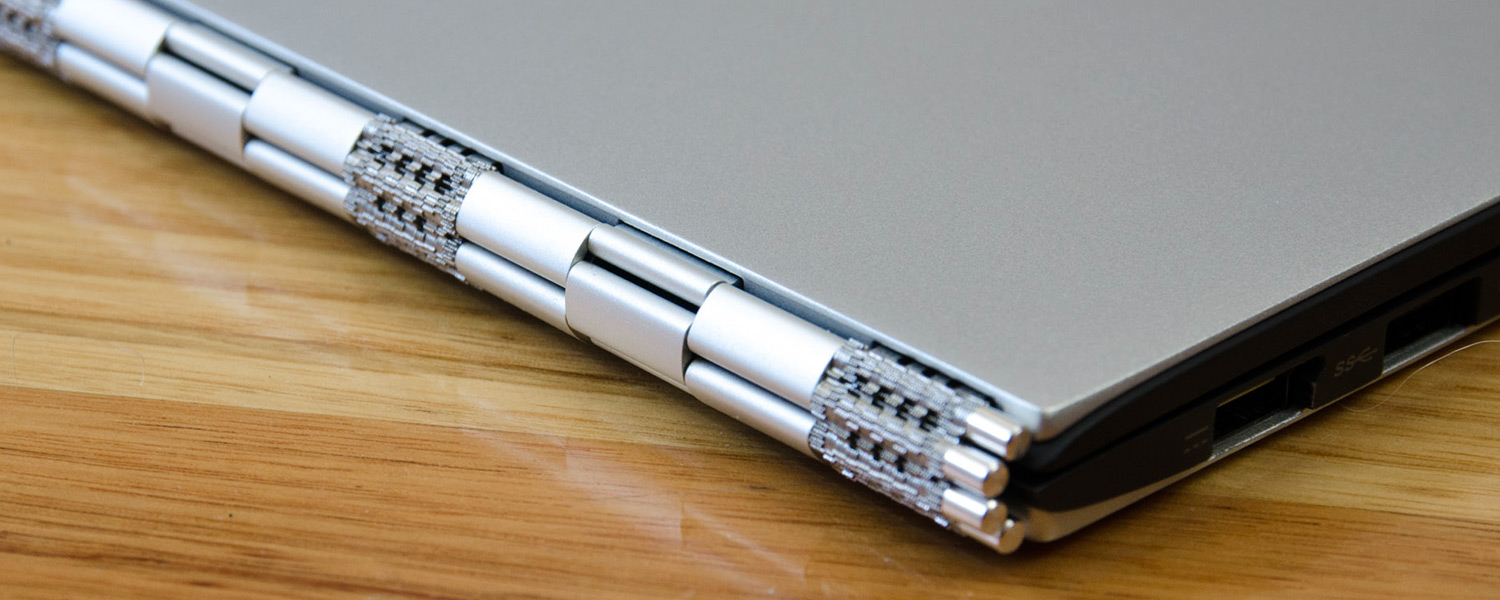Final Thoughts
I am torn over the Lenovo Yoga 3 Pro. On the one hand, it's the ideal Ultrabook with tons of use cases and a fantastic form factor. On the other hand, it doesn't live up to my expectations for a device of this price, leaving me feeling a little disappointed.
I love the form factor. The Yoga 3 Pro is slim, sleek and sexy, featuring a classy aluminium shell and Gorilla Glass-protected display, complemented by an 800-piece watchband hinge that looks fantastic (some may disagree). It's also one of the lightest Ultrabooks going around, making it very portable and the perfect choice for the user always on the move.
Although the keyboard layout of the Yoga 3 Pro could use a few tweaks, I enjoyed typing this review on it, and generally had no issues using the touchpad. The display is fantastic, providing crisp and clear imagery via its large resolution, and great color reproduction. Windows display scaling still needs some work so we can all fully enjoy the benefits of a high resolution screen, something I hope Microsoft is putting a lot of emphasis on fixing in Windows 10.
One of the unique aspects of the Yoga 3 Pro is its ability to fold into a number of different usage modes. While I spent most of my time using the Yoga as a laptop, being able to transform it with ease into a tablet, or use the base as a stand for the touchscreen, opens up a whole range of interesting uses for the device. Using the Yoga as a tablet or stand is great for content consumption by yourself or with others, while the laptop mode still allows the device to be used as a content creator.
Where the Yoga 3 Pro lets me down is Broadwell. Intel's new 14nm Core M processor for low-power devices does have a reduced TDP compared to Y-series Haswell parts, but it's come at the expense of performance. Sure, the performance isn't significantly lower than a 15W or 11.5W Haswell part --which from a perspective is impressive – but ideally I'd like to see no reduction in performance moving to a new generation in the same form factor.
The Yoga 3 Pro provides good enough performance for most tasks, so long as you're not planning on playing any intensive 3D games. The aspect of Broadwell and the Yoga 3 Pro that I found most disappointing however is battery life. Despite the new Intel chip inside, the Yoga 3 Pro lasted 5 - 6 hours on regular usage, which is less than the Yoga 2 Pro and not all that impressive for an Ultrabook. If you're spending $1,200 on a laptop like this, I'd be wanting at least eight hours of life.
And that brings me to the price: $1,199 for the 256 GB model, and $1,399 for the 512 GB model. This is a little expensive for a 13.3-inch Ultrabook, but far from bad value considering the multiple benefits the Yoga provides. Battery life, and to a lesser extent performance, are two reasons why the Yoga 3 Pro isn't an automatic recommendation, but if you can look past these downsides you'll be left with a generally great device from Lenovo.
score
Pros: Excellent form factor, it's so slim and so light. Watchband hinge facilitates multiple use cases. 3200 x 1800 IPS display is crisp and vibrant when Windows scales correctly.
Cons: Battery life isn't great for a $1,000+ Ultrabook, especially considering it's powered by Broadwell. Core M also disappoints with performance to an extent.



